
Index
Applications & Benefits of GAO’s RFID, BLE, IoT & Drones for Food and Beverage Retailers Industry
GAO Software Provides Easy Integration with API
Case Studies of RFID, IoT & Drone Applications
GAO RFID Systems & Hardware for Food and Beverage Retailers Industry
GAO Makes Efforts to Satisfy Customers
GAO Has Served Food and Beverage Retailers Industry Extensively
Overview
The food and beverage retailers industry encompasses a wide array of businesses that provide essential sustenance and culinary enjoyment to consumers. This sector includes traditional grocery stores and supermarkets, as well as convenience stores and specialty food outlets, each offering a unique shopping experience. Additionally, it encompasses bakeries, cafes, fast food restaurants, full-service dining establishments, bars, and food trucks, catering to various dining preferences. This industry is marked by intense competition and is shaped by evolving consumer tastes, economic factors, and regulatory requirements. Ongoing innovation, such as the rise of online food delivery services and sustainability initiatives, plays a pivotal role in shaping its trajectory.
GAO’s RFID, BLE, IoT, and drone technologies have helped its customers in food and beverage retailers industry to improve their work processes, their operations and productivity by better management of their staff, materials and operational equipment such as refrigeration equipment like freezers and walk-in coolers, food preparation essentials such as ovens, grills, and mixers, as well as storage solutions like shelving units and food storage containers. Coffee and beverage establishments rely on coffee machines and dispensers, while food display and serving equipment like buffet stations and heat lamps are vital for presentation. Point of Sale (POS) systems, commercial dishwashers, and sanitation equipment ensure smooth operations, while packaging machines and wrapping equipment facilitate food preparation for takeout and storage. In addition, kitchen ventilation systems, security and surveillance setups, storage and handling tools, audio systems, and office equipment round out the comprehensive list of equipment essential for various food and beverage retail businesses.
Ranked as one of the top 10 global RFID suppliers, GAO RFID Inc. is based in New York City, U.S. and Toronto, Canada. GAO offers a comprehensive selection of UHF, HF (including NFC) and LF RFID (radio frequency identification) readers and tags, BLE (Low Energy Bluetooth) gateways and beacons, and various RFID and BLE systems such as people tracking, asset tracking, access control, parking control, fleet management, WIP (work in progress), traceability. Such RFID and BLE products and systems, as well as its IoT and drone technologies, have been successfully deployed for food and beverage retailers industry. Its sister company, GAO Tek Inc. https://gaotek.com, is a leading supplier of industrial or commercial testers and analyzers, drones, and network products.
The targeted markets of both GAO RFID Inc. and GAO Tek Inc. are North America, particularly the U.S., Canada, Mexico, and Europe. As a result, this website gaorfid.com is offered in English and other major languages of North America and Europe such as Spanish, French, German, Italian, Polish, Ukrainian, Romanian, Russian, Dutch, Turkish, Greek, Hungarian, Swedish, Czech, Portuguese, Serbian, Bulgarian, Croatian, Danish, Finnish, Norwegian, Slovak, Catalan, Lithuanian, Bosnian, Galician, Slovene, Latvian, Estonian, Welsh, Icelandic, and Irish.
Applications & Benefits of GAO’s RFID, BLE, IoT & Drones for Food and Beverage Retailers Industry
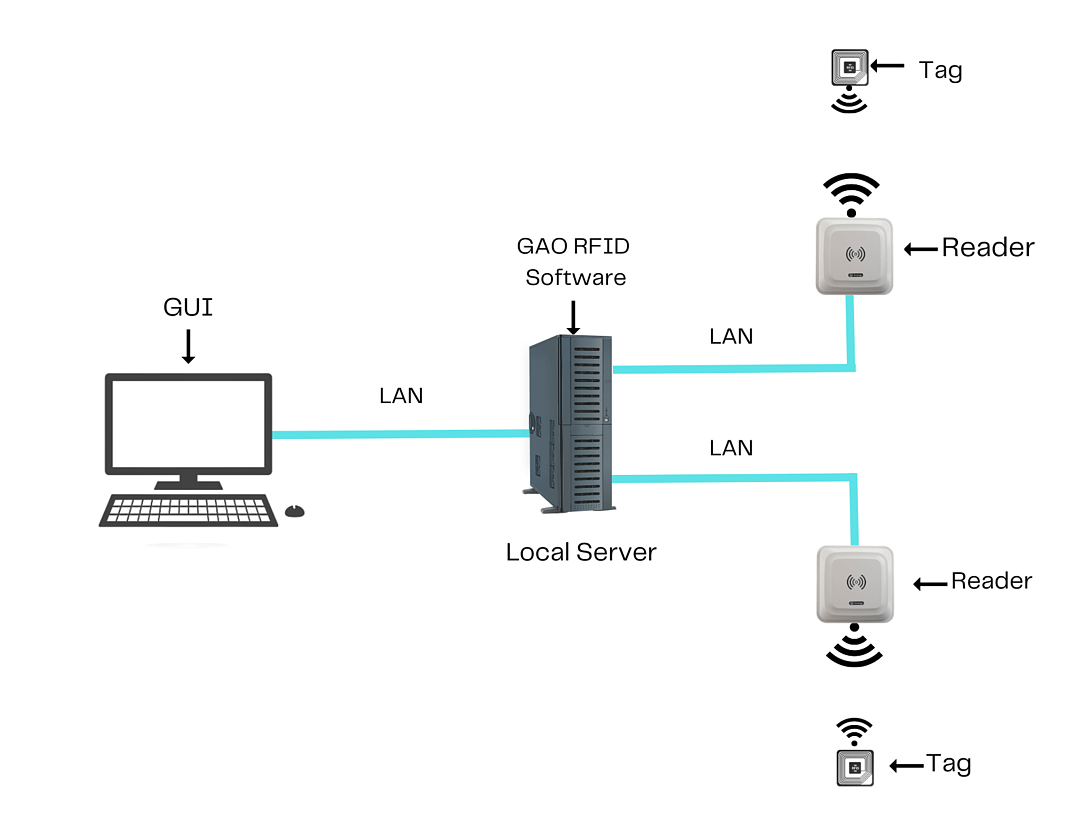 To satisfy its customers, GAO’s RFID or RFID Systems for food and beverage retailers industry are offered in 2 versions. One version is that its software is running on a local server that normally is on our client’s premises, and another version runs in the cloud. The cloud server could be GAO’s cloud server, client’s own cloud server or a cloud server from one of the leading cloud server providers such as Amazon Web Services (AWS), Microsoft Azure, Google Cloud, IBM Cloud (formerly SoftLayer), Oracle Cloud, RedHat, Heroku, Digital Ocean, CloudFlare, Linode and Rackspace. The above illustrates GAO system for food and beverage retailing software running on a local server.
To satisfy its customers, GAO’s RFID or RFID Systems for food and beverage retailers industry are offered in 2 versions. One version is that its software is running on a local server that normally is on our client’s premises, and another version runs in the cloud. The cloud server could be GAO’s cloud server, client’s own cloud server or a cloud server from one of the leading cloud server providers such as Amazon Web Services (AWS), Microsoft Azure, Google Cloud, IBM Cloud (formerly SoftLayer), Oracle Cloud, RedHat, Heroku, Digital Ocean, CloudFlare, Linode and Rackspace. The above illustrates GAO system for food and beverage retailing software running on a local server.
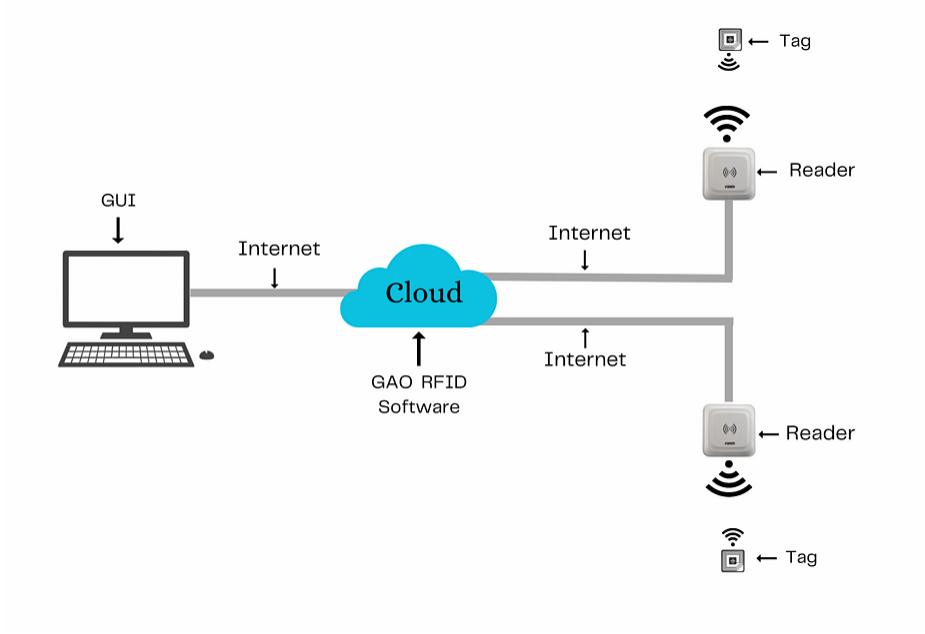
The above illustrates GAO system food and beverage retailers industry with its software running in cloud.
GAO’s RFID and BLE technologies, consisting of RFID readers, RFID tags, BLE gateways, BLE beacons, software, cloud services and their systems, have the following applications in food and beverage retailers industry:
- Inventory Management:GAO’s RFID tags can be attached to products and packaging to enable real-time tracking of inventory levels. This helps retailers monitor stock levels accurately and reduce the likelihood of stockouts or overstock situations.
- Supply Chain Tracking:GAO’s RFID can be used to track the movement of products throughout the entire supply chain. Retailers can monitor the location and condition of goods as they move from suppliers to distribution centers and stores.
- Shelf Stocking and Replenishment:GAO’s RFID tags on store shelves and products can trigger automatic restocking orders when inventory reaches a certain threshold. This ensures that products are always available to customers.
- Freshness and Shelf Life Monitoring:GAO’s RFID sensors can monitor temperature and other environmental conditions in storage areas and refrigerators to ensure that perishable goods are stored under the right conditions, helping to prevent spoilage and food waste.
- Authentication and Quality Control: GAO’s RFID tags can be used to verify the authenticity of high-value or specialty products, such as fine wines and gourmet items. Retailers can also use RFID to track the quality and origin of products.
- Checkout and Payment:GAO’s RFID-enabled checkout systems, such as contactless payment cards or mobile wallets, offer a convenient and quick payment option for customers. These systems can enhance the speed of transactions during peak hours.
GAO’s drone technologies find the following applications in the food and beverage retailers industry:
- Inventory Management:GAO’s Drones equipped with cameras and sensors can perform aerial inventory counts in large warehouses or storage facilities. They can quickly scan and assess stock levels, providing accurate data for inventory management.
- Supply Chain Monitoring:GAO’s drones can be used to monitor the movement of goods and shipments within the supply chain. They can track the transportation of products from suppliers to distribution centers and from distribution centers to retail locations.
- Crop Monitoring:GAO’s retailers involved in the agricultural sector, drones can help monitor crops’ health and growth. They can capture aerial imagery and collect data on crop conditions, enabling better decision-making regarding sourcing and quality control.
- Delivery Services: GAO’s some retailers have experimented with drone delivery services to transport food and beverages directly to customers’ doorsteps. This can lead to faster delivery times and reduced delivery costs.
- Surveillance and Security:GAO’s drones equipped with cameras can provide real-time surveillance of retail locations, warehouses, and distribution centers. They can help deter theft and monitor for unauthorized access.
- Marketing and Advertising: GAO’s drones can be used to capture stunning aerial footage for marketing campaigns and promotions. This can be particularly effective for showcasing restaurant locations or scenic vineyards.
GAO’s IoT technologies, consisting of IoT sensors, sensors networks and systems, find the following applications in the food and beverage retailers industry:
- Inventory Management: GAO’s IoT sensors can monitor real-time inventory levels, providing accurate data on stock quantities. This helps retailers manage inventory more efficiently, reducing overstocking and stockouts.
- Temperature Monitoring: GAO’s IoT sensors can track the temperature of refrigerators and storage areas to ensure that perishable goods are stored at the correct temperatures, minimizing spoilage and food waste.
- Quality Control: GAO’s Sensors can monitor humidity levels and other environmental factors to maintain the quality of products like wine, cheese, and produce, ensuring that they meet customer expectations.
- Supply Chain Visibility: GAO’s IoT-enabled tracking devices can monitor the movement and conditions of products throughout the supply chain, helping retailers trace the origin and journey of goods.
- Energy Management: GAO’s IoT systems can optimize energy use in retail facilities by controlling lighting, heating, and cooling systems based on occupancy and environmental conditions, leading to energy savings.
- Customer Insights: GAO’s Retailers can use IoT to gather data on customer behavior, such as foot traffic, shopping patterns, and product preferences, to enhance the in-store shopping experience.
- Food Safety and Traceability: GAO’s IoT sensors can provide real-time monitoring of food safety parameters, such as pH levels and pathogens, helping to ensure food safety and compliance with regulations.
GAO Helps Customers Comply with Standards, Mandates & Regulations of Food and Beverage Retailers Industry
GAO RFID Inc. has helped many companies in food and beverage retailers industry to deploy RFID, BLE, IoT and drone systems and to ensure such deployments complying with the applicable industry standards, mandates and government regulations:
RFID, BLE, IoT, & Drone Standards & Mandates
- ISO 18000 Series
- EPC Gen2
- ISO 15693
- ISO 14443
- ISO 21384
- ASTM F38
- ISO 22000
- GS1 EPCglobal Standards
- FAA Part 107 (United States)
- ANSI/CTA-2063 (United States)
- EASA Regulations (European Union)
- Bluetooth SIG (Special Interest Group)
- iBeacon
- CAA CAP 722 (United Kingdom)
- OPC UA (Unified Architecture)
- AMQP (Advanced Message Queuing Protocol):
- HTTP/HTTPS
- MQTT (Message Queuing Telemetry Transport)
- NFC (Near Field Communication)
- Eddystone
- Bluetooth Mesh
- HACCP (Hazard Analysis and Critical Control Points)
U.S. Government Regulations
- Food Safety Modernization Act (FSMA)
- Federal Food, Drug, and Cosmetic Act (FDCA)
- Nutrition Labeling and Education Act (NLEA)
- Food Allergen Labeling and Consumer Protection Act (FALCPA)
- Food Additives Amendment
- Fair Packaging and Labeling Act (FPLA)
- Menu Labeling Requirements (FDA)
- Country of Origin Labeling (COOL) requirements
- Occupational Safety and Health Administration (OSHA) Regulations
- Alcohol and Tobacco Tax and Trade Bureau (TTB) regulations for alcohol sales
Canadian Government Regulations
- Food and Drugs Act
- Food Safety and Inspection Regulations
- Safe Food for Canadians Regulations
- Canadian Agricultural Products Act
- Health of Animals Regulations (for pet food)
- Occupational Health and Safety Regulations
- Food Allergen Labeling regulations
GAO Software Provides Easy Integration with API
GAO’s RFID and BLE software offers a free trial for both the server-based and cloud versions, and offers an API to the important systems in in food and beverage retailers industry such as:
Personnel Management:
- Employee Scheduling and Shift Management
- Labor cost control and payroll management
- Training and onboarding of new staff
- Health and Safety Compliance Tracking
- Performance Evaluation and Feedback
Equipment Management:
- Equipment Utilization and Optimization
- Asset Tracking and Management
- Predictive Maintenance and Condition Monitoring
- Equipment Procurement and Lifecycle Management
Access Control:
- Inventory and asset tracking for kitchen tools and appliances
- Monitoring equipment efficiency and energy consumption
- Replacement and procurement planning for kitchen equipment
Warehouse Management:
- Order Fulfillment and picking optimization
- Temperature monitoring for cold storage
- Shelf-life tracking and rotation.
- Supplier management and order placement
Supply Chain Management:
- Demand forecasting and inventory replenishment
- Transportation and Logistics Management
- Tracking shipments in real-time
- Compliance with food safety and quality standards
Other Applications:
- Point of sale (POS) system for sales and payment processing
- Customer feedback and satisfaction surveys
- Energy Management and Conservation
- Food safety and traceability for recalls and audits
GAO has enabled its customers to make use of some of the leading software and cloud services in the food and beverage retailer industry. Below are some of the popular software and cloud services in food and beverage retailers industry.
Workday HCM, SAP SuccessFactors, Oracle HCM Cloud, Kronos Workforce Ready and ADP Workforce Now. For equipment management, notable options UpKeep, Maintenance Connection, eMaint CMMS, Fiix. Access control solutions encompass HID Global, LenelS2, Genetec Security Center and Brivo. In the realm of warehouse management, top choices consist of SAP Extended Warehouse Management (EWM), HighJump, Oracle Warehouse Management Cloud and Manhattan Associates. In supply chain management, Blue Yonder (formerly JDA) Oracle Supply Chain Management Cloud, SAP Integrated Business Planning (IBP), Kinaxis RapidResponse.
GAO has worked with some of the leading technology companies of food and beverage retailers industries to provide integrated RFID, BLE, IoT and drone solutions to customers. Here are some of the technology leaders in other furniture related product manufacturing industry.
SAP, Oracle, Microsoft, IBM, Salesforce, Epicor, NCR Corporation, PAR Technology, Verifone, Zebra Technologies, Toshiba Global Commerce Solutions and Posiflex.
Case Studies of RFID, IoT & Drone Applications
Case Studies of RFID Applications
Below are some RFID application cases in food and beverage retailers industry.
A company uses RFID technology to track inventory levels, improve product freshness, and prevent theft. In 2005, it became the first major retailer to mandate the use of RFID tags on all cases of its top 100 suppliers. Today, it uses RFID tags on a variety of products, including meat, poultry, produce, and electronics.
A market uses RFID technology to track the movement of products through its supply chain and to ensure that food is fresh. In 2012, this market began using RFID tags on all cases of its fresh produce. Today, this market uses RFID tags on a variety of products, including meat, poultry, fish, and prepared foods.
A well-known company uses RFID technology to track inventory levels, improve product freshness, and prevent theft. In 2009, the company began using RFID tags on all cases of its fresh produce. Today, it uses RFID tags on a variety of products, including meat, poultry, seafood, and dairy products.
One of Canada’s largest grocery retailers implemented RFID technology in 2018 to improve inventory management and reduce out-of-stock situations. They utilized RFID tags on individual products to enhance visibility and accuracy in their supply chain operations. This resulted in a significant reduction in out-of-stocks, improved on-shelf availability, and increased customer satisfaction.
Another major Canadian grocery retailer implemented RFID technology in 2019 to track the movement of high-value products and prevent theft. They deployed RFID tags on items such as alcohol, tobacco, and cosmetics. This has helped to reduce theft losses and improve product availability.
One of the Canada’s largest food retailer implemented UHF RFID technology in 2018 to improve inventory management and reduce out-of-stock situations. They utilized UHF RFID tags on individual products to enhance visibility and accuracy in their supply chain operations. This has resulted in a significant reduction in out-of-stocks, improved on-shelf availability, and increased customer satisfaction.
Another major Canadian grocery retailer implemented UHF RFID technology in 2019 to track the movement of high-value products and prevent theft. They deployed UHF RFID tags on items such as alcohol, tobacco, and cosmetics. This has helped to reduce theft losses and improve product availability.
A German multinational wholesale and retail company implemented RFID technology in 2010 to track the movement of high-value products and prevent theft. They deployed RFID tags on items such as alcohol, tobacco, and cosmetics. This has helped to reduce theft losses and improve product availability.
A British multinational grocery and general merchandise retailer implemented RFID technology in 2012 to track inventory levels and improve product freshness. They use RFID tags on cases of fresh produce and meat. This has helped to reduce stockouts and food waste.
A French multinational retail corporation implemented RFID technology in 2013 to track the movement of products through its supply chain. They use RFID tags on cases of products to track their location and movement from the warehouse to the store shelf. This has helped to improve efficiency and accuracy in their operations.
A German multinational discount supermarket chain implemented RFID technology in 2014 to track inventory levels and improve product freshness. They use RFID tags on cases of fresh produce and meat. This has helped to reduce stockouts and food waste.
Many applications of RFID by GAO can be found here.
Food & Beverage Manufacturing | RFID Solutions
Case Studies of IoT Applications
Below are some IoT application cases in the food and beverage retailers industry.
One of the Canada’s largest food retailer is using IoT to improve inventory management, reduce food waste, and improve the customer experience. For example, LCL is using IoT-enabled sensors to track the temperature of fresh food in its stores and distribution centers. This data is used to ensure that food is stored and transported at the correct temperature, which helps to reduce food waste. LCL is also using IoT-enabled beacons to provide customers with personalized shopping experiences, such as targeted promotions and product information.
Another major Canadian grocery retailer is using IoT to improve inventory management, reduce food waste, and improve the customer experience. For example, Metro is using IoT-enabled sensors to track the movement of pallets through its distribution centers. This data is used to improve efficiency and accuracy in operations. Metro is also using IoT-enabled beacons to provide customers with personalized shopping experiences, such as wayfinding and product recommendations.
The Canadian division of the world’s largest retailer is using IoT to improve inventory management, reduce food waste, and improve the customer experience. For example, Walmart Canada is using IoT-enabled sensors to track the movement of pallets through its distribution centers. This data is used to improve efficiency and accuracy in operations. Walmart Canada is also using IoT-enabled beacons to provide customers with personalized shopping experiences, such as wayfinding and product recommendations.
A company in Mexico is using IoT to improve inventory management, reduce food waste, and improve the customer experience. For example, Walmex is using IoT-enabled sensors to track the movement of pallets through its distribution centers. This data is used to improve efficiency and accuracy in operations. Walmex is also using IoT-enabled beacons to provide customers with personalized shopping experiences, such as wayfinding and product recommendations.
Another Mexican company is using IoT to improve inventory management, reduce food waste, and improve the customer experience. For example, Soriana is using IoT-enabled sensors to track the temperature of fresh food in its stores and distribution centers. This data is used to ensure that food is stored and transported at the correct temperature, which helps to reduce food waste. Soriana is also using IoT-enabled beacons to provide customers with personalized shopping experiences, such as targeted promotions and product information
A Mexican company is using IoT to improve inventory management, reduce food waste, and improve the customer experience. For example, Costco México is using IoT-enabled sensors to track the temperature of fresh food in its stores and distribution centers. This data is used to ensure that food is stored and transported at the correct temperature, which helps to reduce food waste. Costco México is also using IoT-enabled beacons to provide customers with personalized shopping experiences, such as targeted promotions and product information.
A company in Europe is using IoT to track the movement of pallets through its distribution centers and to monitor the temperature of fresh food in its stores. This has helped to improve efficiency and reduce food waste.
Another company in Europe is using IoT to track the movement of products through its supply chain and to monitor the temperature of fresh food in its stores. This has helped to improve efficiency and reduce food waste.
Case Studies of Drone Applications
Below are some drone application cases in food and beverage retailers industry.
A company in USA in 2016 partnered with a drone delivery company to test drone deliveries in Fayetteville, Arkansas. The program was initially limited to a few hundred customers, but this company has since expanded it to other markets. In 2022, this company announced that it would be expanding its drone delivery program to 36 states.
A company in the USA partnered with a drone delivery company in 2022 to test drone deliveries in Maryland. The program is initially limited to a few hundred customers, but this company plans to expand it to other markets in the future.
Another company in USA in 2021 partnered with a drone delivery company to test drone deliveries in Cincinnati, Ohio. The program is initially limited to a few dozen customers, but this company plans to expand it to other markets in the future.
One food retailer in USA in 2016 partnered with a drone delivery company to test drone deliveries in Reno, Nevada. The program was initially limited to a few hundred customers, but this company has since expanded it to other markets. In 2022, this announced that it would be expanding its drone delivery program to 50 markets.
The Canada’s largest food retailer in 2021 partnered with a drone delivery company to test drone deliveries in Milton, Ontario. The program is initially limited to a few hundred customers, but this company plans to expand it to other markets in the future.
Another major Canadian grocery retailer in 2022 partnered with a drone delivery company to test drone deliveries in Montreal, Quebec. The program is initially limited to a few dozen customers, but this company plans to expand it to other markets in the future.
A Canadian grocery retailer in 2022 partnered with a drone delivery company to test drone deliveries in Nova Scotia. The program is initially limited to a few hundred customers, but this company plans to expand it to other markets in the future.
The largest convenience store chain of Mexico partnered with a drone delivery company to test drone deliveries in Michoacán. The program is initially limited to a few hundred customers, but this company plans to expand it to other markets in the future.
The third-largest grocery retailer of Mexico in 2022 partnered with A drone delivery company to test drone deliveries in Monterrey, Nuevo León. The program is initially limited to a few dozen customers, but this company plans to expand it to other markets in the future.
A company in France in 2022 partnered with a drone delivery company to test drone deliveries in France. The program is initially limited to a few dozen customers, but this company to expand it to other markets in the future.
GAO RFID Systems & Hardware for Food and Beverage Retailers Industry
GAO RFID Inc. offers the largest selection of BLE gateways, BLE beacons, RFID readers, tags, antenna, printers, and integrated RFID systems for various industries, including food and beverage retailers industry.
BLE (Bluetooth Low Energy)
GAO offers advanced BLE gateways:
as well as versatile beacons with such important functions as temperature, humility, vibration and panic button:
GAO’s BLE technology is suitable for many industries, including food and beverage retailers industry.
UHF (Ultra High Frequency) RFID
GAO offers the largest selection of UHF RFID readers for various industries, including food and beverage retailers industry.
GAO RFID offers the widest choice of UHF RFID tags, labels, badges, wristbands for various industries, including food and beverage retailers industry:
and an array of antennas to address different applications:
HF (High Frequency), NFC (Near Field Communications) and LF (Low Frequency) RFID
GAO offers the largest selection of HF, NFC, and LF RFID readers for various industries, including food and beverage retailers industry.
HF, NFC and LF RFID tags, labels, badges, wristbands for various industries, including food and beverage retailers industry:
and antennas:
GAO also offers RFID printers:
Digital I/O adapters:
and relay controllers:
For embedded applications, GAO offers UHF, HF and LF RFID reader modules:
- 860-960 MHz RFID Module
- 13.56 MHz High Frequency RFID Module
- 125 kHz RFID Reader Modules
- 125 kHz RFID Reader Modules
In collaboration with its sister company GAO Tek Inc, a wide selection of high-quality drones is offered:
The RFID systems by GAO are highly popular for clients in food and beverage retailers industry:
Physical asset or operational equipment tracking system:
Assets that can be effectively tracked using GAO’s technologies include tracking solutions, offer versatile asset tracking capabilities across diverse industries. With their RFID technology, GAO effectively tracks a wide array of assets, including inventory items, equipment, tools, medical instruments, vehicles, livestock, documents, retail merchandise, containers, personnel, data center assets, library books, waste bins, high-value artifacts, returnable transit items (RTIs), energy meters, retail assets, hospital equipment pharmaceuticals, and even weapons and military assets. This extensive range of applications demonstrates the flexibility and utility of GAO’s RFID and tracking technologies in optimizing inventory management, enhancing security, and improving operational efficiency across various sectors.
People or workers tracking system:
Personnel or people access control system:
Parking or vehicle control system:
Furthermore, GAO provides the customization of RFID tags, RFID readers, BLE beacons and BLE gateways, IoT, drones, and systems and consulting services for food and beverage retailers industry and for various industries in all metropolitans in North America, particularly the U.S., Canada and Mexico, and Europe:
GAO Makes Efforts to Satisfy Customers
Large Choice of Products
In order to satisfy the diversified needs of their corporate customers, GAO RFID Inc. and its sister company GAO Tek Inc. together offer a wide choice of RFID, BLE, IoT, drones, testing and measurement devices, and network products.
Overnight Delivery
In order to shorten the delivery to our customers, GAO has maintained a large stock of its products and is able to ship overnight within continental U.S. and Canada, and fast delivery to anywhere in Mexico and Europe from the nearest warehouse.
Local to Our Customers
We are located in both the U.S. and Canada. We travel to customers’ premises if necessary. Hence, we provide a very strong local support to our customers in North America, particularly the U.S., Canada and Mexico, and Europe. Furthermore, we have built partnerships with some integrators, consulting firms and other service providers in different cities to further strengthen our services. Here are some of the service providers in food and beverage retailers industry we have worked with to serve our joint customers:
- IBM Global Business Services
- Deloitte
- Capgemini
- Cognizant
- Accenture
- PwC (PricewaterhouseCoopers)
- Wipro
- Tata Consultancy Services (TCS)
- EY (Ernst & Young)
- Infosys
- HCL Technologies
- DXC Technology
- Softtek
- Neoris
- KPMG
- Everis
GAO Has Served Food and Beverage Retailers Industry Extensively
GAO RFID Inc. and its sister company GAO Tek Inc. together offer a wide choice of RFID, BLE, IoT, drone, testing and measurement devices, and network products.
GAO’s products and technologies have helped its customers in food and beverage retailers industry to achieve success in Industry 4.0, additive manufacturing (3D printing), the Internet of Things (IoT), Personalized medicine and the utilization of artificial intelligence (AI), image recognition, wearable medical devices, telemedicine, miniaturization, Sustainability and supply chain resilience, blockchain and 5G connectivity.
GAO RFID Inc. has deployed RFID, BLE and IoT projects for many companies in food and beverage retailers industry including many in its various divisions such as:
- Grocery Stores:These stores primarily sell packaged and fresh food products, beverages, and household items. Examples include supermarkets, hypermarkets, and convenience stores.
- Specialty Food Stores:These retailers focus on specific categories of food products, such as organic foods, gourmet foods, health foods, or ethnic foods. Examples include health food stores and cheese shops.
- Beverage Retailers:This sub-industry includes stores that specialize in selling beverages, both alcoholic and non-alcoholic. Examples include liquor stores, wine shops, and tea or coffee specialty stores.
- Convenience Stores:Convenience stores offer a limited selection of groceries, snacks, and beverages and are known for their convenience and extended hours of operation.
- Online Grocery and Food Delivery:E-commerce platforms and apps that allow consumers to order groceries and food online for home delivery or pickup. Examples include grocery delivery services and food delivery apps like Instacart and Uber Eats.
- Farmers’ Markets:These markets feature locally grown and produced food items and are often held on specific days or weekends in various locations.
- Specialty Beverage Retailers:Stores that exclusively sell beverages, such as tea shops, coffee shops, and juice bars.
- Discount Stores:These retailers offer lower-priced food and beverage products, often with a focus on value and cost savings. Examples include discount grocery chains.
- Confectionery Stores:Stores that specialize in selling sweets and confectionery items, including chocolates, candies, and baked goods.
- Wholesale Food Distributors:These businesses supply food and beverages to other retailers, restaurants, and foodservice establishments in bulk quantities.
GAO’s technologies enable its customers food and beverage retailers industry to effectively track their workforces such as time and attendance software, employee scheduling software, labor management systems, inventory and workforce analytics, and more and effectively track operational assets such as asset management systems gps tracking, rfid (radio-frequency identification) technology, barcode systems, and other software and hardware solutions.
Here are some of the leading companies in food and beverage retailers industry GAO has served:
- Walmart
- Stop & Shop
- ShopRite
- Wegmans
- Hannaford
- BJ’s Wholesale Club
- Whole Foods Market
- Costco
- Key Food
- Tops Friendly Markets
- Market Basket
- Acme Markets
- Kroger
- Meijer
- Hy-Vee
- Target
- Piggly Wiggly
- Schnucks
- H-E-B
- Winn-Dixie
- Wawa
- Food Lion
- Publix
- Ingles Markets
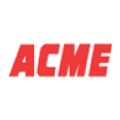
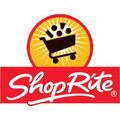
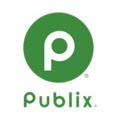
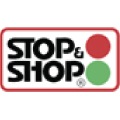
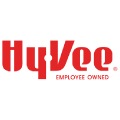
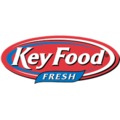
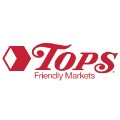
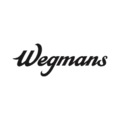
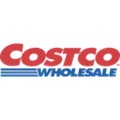

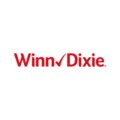
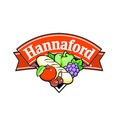

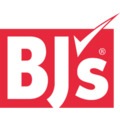


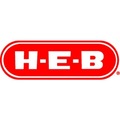
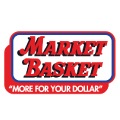
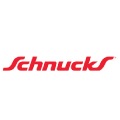
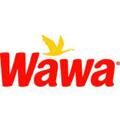
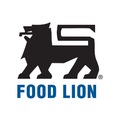
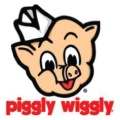
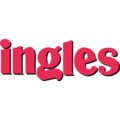
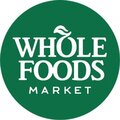
You Are Invited to Contact Us!
If you are interested in our products, services https://gaorfid.com/ask-the-experts/or partnering with us, please feel free to contact us by filling out this form:
or email us at sales@gaorfid.com
